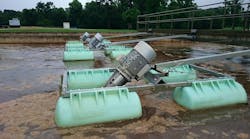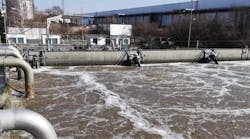All flow measurement technologies have inherent limitations on the level of accuracy they provide based on a number of application conditions, such as range, viscosity, density, ambient conditions, process temperature, process pressure and more. One technology to carefully consider is differential pressure in the form of a specially designed Venturi tube. Venturi tube accuracy is always expressed as a plus/minus (+/-) value down to a calculated pipe Reynolds number (Re), which becomes its low flow limit for its basic accuracy performance. Other technologies, such as magnetic and ultrasonic meters, have similar low flow limits as a function of a minimum line velocity requirement, although the components of the low Re calculation are a bit more complex compared to a single-line velocity calculation.
Performance limitations and advantages
From an Re performance point of view, Venturi tubes have been categorized by the type or internal design of the meter. Designs such as the ISO 5167, classical long-form and modified short-form each have different performance limitations and advantages. For example, the ISO 5167 and ASME classical type meters have a minimum pipe Re limitation (for constant discharge coefficient accuracy) of 200,000, while modified short-form Venturi meters have a limitation of 75,000.
In order to put these values into perspective, 200,000 pipe Re would represent approximately 720 gallons per minute flowing in a 10.0-inch pipe, while 75,000 pipe Re represents approximately 270 gallons per minute in that same 10-inch line, but using the modified short-form. Therefore, the accuracy statement for the ISO 5167 and ASME classical type meters would be +/-1 percent of the actual rate of flow (in the case of a machined convergent design) down to 720 gallons per minute, while the modified short-form meter design would be +/-0.5 percent of the actual rate of flow down to 270 gallons per minute.
Note that both the ISO5167/ASME classical and modified short-form meter designs can operate at less than their stated minimum pipe Re values, but with a modified accuracy statement. As an example, if the minimum flow rate dropped to 500 gallons per minute for the classical type meter, the adjusted accuracy statement would be approximately +3.0/-1.7 percent of the actual rate of flow because a bias error develops below about 295,000 the impact of which is reflected in a modified accuracy statement.
The pipe Re may be a potential limiting factor when applying differential pressure technology in a flow metering design, depending on the minimum flow rate pipe Re. As a practical matter, there is generally no upper end Re requirement with certain types of differential producers, some of which are used for very high Re applications in the 35 million to 50 million Re range.
Differential pressure transmitter performance
One other element in analyzing the system accuracy performance of any Venturi tube is the magnitude of the differential produced by the Venturi meter at the minimum flow rate, since the secondary instrumentation that is typically used with a Venturi meter is a differential pressure transmitter.
The performance capabilities of differential pressure transmitters have improved over the years, as the result of the transmitter manufacturers changing from analog to digital signal processing. Additionally, there have been significant improvements in the pressure sensing cell and method of signal processing elements of the transmitter. Where the analog-type transmitter required one 1.0 inch of differential at the minimum flow rate, today’s smart digital transmitter can process an input differential as low as 0.10 inches of water, depending on line conditions including maintaining low acoustic noise to produced pressure ratios.
There is no question that the opportunity to effectively design a highly accurate flow metering system using a Venturi meter primary element is primarily due to the result of significant advances in differential pressure transmitter’s design and performance.
Accurate and reliable system accuracy performance can be assured using a low Re Venturi meter and a smart differential pressure transmitter on low and ultra-low flow applications, where other flow measurement technologies, such as magnetic and ultrasonic meters, suffer from poor accuracy performance due to low line velocity conditions.
A wide range of flow metering can now be accomplished by selecting the right differential pressure transmitter, including multiple transmitters for broad variety of applications.
Bruce Briggs is the president and principal of Primary Flow Signal Inc., a global manufacturing, engineering and technology resource focusing on highly accurate, repeatable and reliable differential flow meters. With more than 30 years in the industry, Briggs has built, arguably, the largest team of expert flow metering, hydraulic and applications engineers, along with technicians and specialists of diverse critical expertise. The companies are comprised of a number of enterprise-owned, fully integrated manufacturing facilities offering a world-class platform for solutions and support for the oil and gas, power, municipal water, wastewater and automotive markets.


